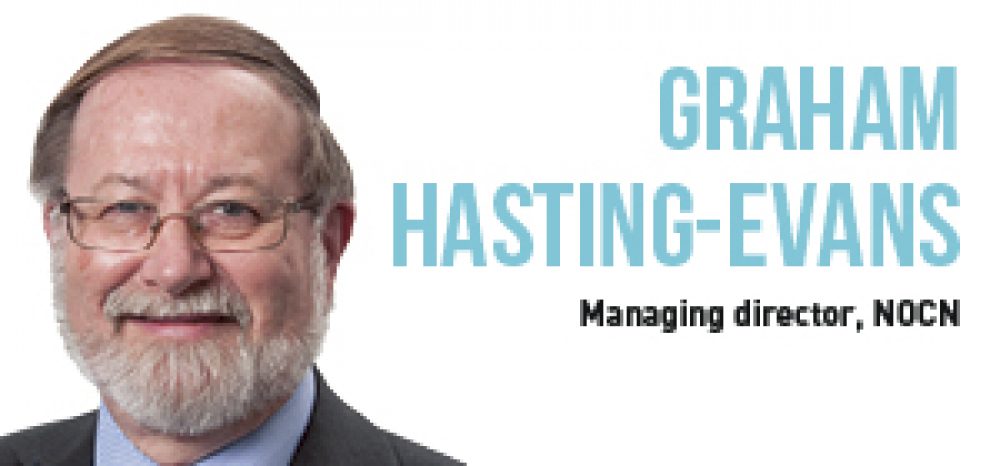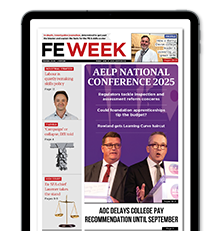It’s time to create a directory of all the apprenticeship standards and technical qualifications that need to be developed, says Graham Hasting-Evans.
In order to establish how big the Institute for Apprenticeships and Technical Education should to be, we need to know how many apprenticeship standards and technical qualifications will have to be developed, quality-assured and managed.
There are currently some 1,700 existing apprenticeship job roles in England, excluding higher and degree apprenticeships, and the best estimate is that if we continue with the present Trailblazer approach, there will eventually be up to 2,500 standards.
And, as Peter Lauener, the interim CEO of IfA-TE, said at the recent AoC conference, the government does not, as yet, have a list of apprenticeship standards that will be needed.
Now let’s look at the other component: technical qualifications. In June 2016 Ofqual reported that as a result of the way such qualifications are recorded between England and Wales, the total number of registered qualifications has risen from 21,676 to 31,600.
This means that the number of technical qualifications likely to come out of the Post-16 Skills Plan process – bearing in mind that already there appear to be duplications between the ideas in the Sainsbury Report and what is happening in Trailblazers – could be very large indeed!
This all presents a worrying, complex picture. No wonder employers and learners find it confusing.
So how are we going to reform the skills system and avoid ending up with a different but equally confusing picture?
No wonder employers and learners find it confusing
I believe we have to start by recognising how people get into and develop their careers. Government is planning to have four main career path routes to our destination (or ‘first-base’) job, namely:
‘Academic’, or what might be seen as the traditional route, following GSCEs, A-levels and university.
‘Apprenticeships’, which in essence is a defined period of learning and skills development that results in qualifying in a defined job role.
‘Technical education’, which involves learning beyond A-level but not necessary to a full degree level.
‘Work-based learning’, where someone gets a job and, generally, goes through a short training course, perhaps supplemented with additional ad-hoc training at a later stage.
We have to understand which route is the best for what employers and the economy need.
The government is about to appoint 15 sector chairs to the IfA-TE. This is an opportunity to confront the issue.
I believe their first task must be to bring together a range of experts who understand the needs of their sector, to analyse what is required across the four main routes.
Step one of the analysis will be to establish a comprehensive-yet-condensed list of ‘destination’ or ‘first-base’ jobs – using occupational mapping for common job types, for example ‘manager’, to avoid duplication when designing technical qualifications and apprenticeships. The list cannot be too rigid, as it will have to flex with any changes that happen in the larger economy.
The government is about to appoint 15 sector chairs to the IfA-TE. This is an opportunity to confront the issue
Once we have a reasonable list, the sector chairs and their employer groups can establish which of the four routes explained above is the primary (best) route, and which could be a secondary route for each job role.
This in turn will produce a directory of those apprenticeship standards and technical qualifications that need to be developed.
This must be robustly managed and challenge the desire to specialise too early; for example, we want to produce a ‘scientist’ rather than a ‘space scientist specialising in Mars exploration’.
If done well, this plan should result in a manageable, focused directory, and clearer career pathways for apprentices, employers, learners and careers advisers.
From this list we can then prioritise which standards and qualifications need to be developed and rolled out first.
We can also better understand from this analysis what we might need to do to support upskilling of the existing workforce, recognising that the majority of this will need to be delivered through the work-based learning route.
Academic and technical education will also contribute, but we can expect only a limited number of people doing more than one full apprenticeship in their life.
Once all this analysis is done, we will be in a position to rationally estimate the likely staffing levels needed in the IfA-TE.
Graham Hasting-Evans is managing director at NOCN








Your thoughts